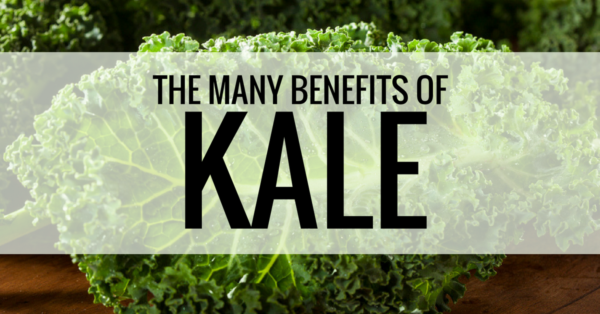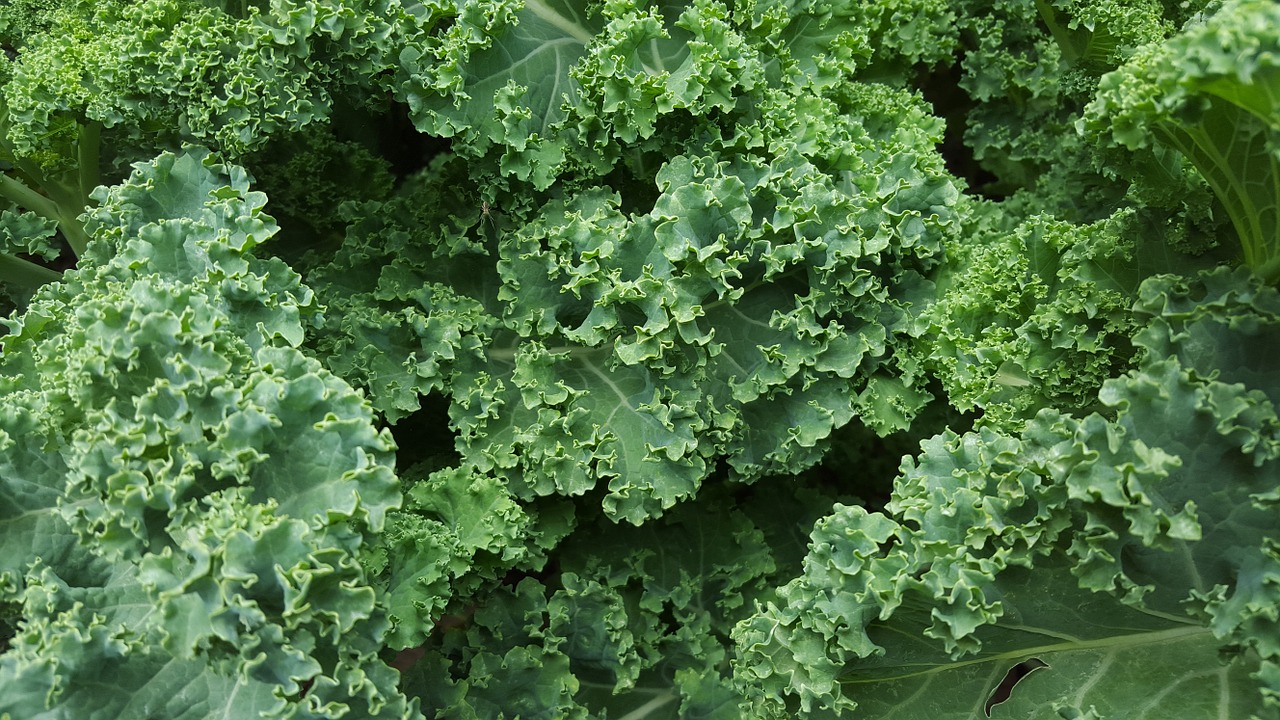Over the last several years, kale has become popularized as one of the healthiest greens we could eat. It has become a staple of smoothie and juice shops and a stereotypical food choice of health nuts, but is the hype justified?
To investigate whether the benefits of kale were overstated or justified, weíve scoured the peer-reviewed scientific literature to find research that has been done on this leafy green.

Kale Nutrient Profile
It is important to understand that while a food may appear to be ìnutritiousî, this is only one part of the equation. Every food contains a myriad of different biochemicals and nutrients. Until we directly study how a food interacts with the human body, its true effect cannot be fully understood.
With that being said, let us first start with the nutrient profile of kale. [5]
At only 100g and 50 calories, kale has a 670% RDA of Vitamin K, 145% RDA Vitamin C, 63% Vitamin A, and respectable amounts of other vitamins and minerals.
Per 100g serving, raw kale has 8198 µg of lutein, and cooked kale has even more. Weíll discuss lutein again later.
From this data alone, kale is one of the most nutrient dense foods one could eat, but how does it interact with our bodies?
Kale Can Stimulate the Immune System
To test the function kale has on the immune system, white blood cells were taken from human participants and put in a petri dish.
Researchers dripped kale extract on these white blood cells and were able to significantly increase the white blood cellsí production of antibodies. In fact, cooked kale had a better immunostimulatory effect than raw!
The same study tested the immune response of mice when given kale extract, and they also found a significant increase in the micesí ability to produce antibodies.
While this study has not been replicated inside the human body, it does provide strong evidence that kale positively effects the immune system.(1)
Kale Can Lower Cholesterol
Another study done on humans in Japan gave the participants 3-4 shots of kale juice a day for 12 weeks. By the end of the study, the participantsí bad (LDL) cholesterol was significantly reduced, averaging about a nearly 30 point drop in just a few months. Their good (HDL) cholesterol was also boosted dramatically. To get similar HDL-raising results, one would need an hour of daily exercise for 7 days a week. (2)
Kale Can Reduce Glaucoma Risk
Glaucoma is the leading cause of blindness in African American women and number two cause of blindness for Caucasian women.†
While various other greens did not seem to cause a significant reduction in glaucoma risk, eating just 2-3 servings a month of kale/collard greens cut glaucoma risk in half. (3)
Many studies have indicated these increased eye health is from lutein and zeaxanthin, compounds that help produce vitamin A. As noted in the nutrition facts originally, kale does contain a high amount of lutein.† However, it is important to understand that there may be other phytochemicals and nutrients that play a role in reducing glaucoma risk, not just two isolated compounds.
To increase the bioavailability of lutein and other nutrients in kale, it is recommended to add some sort of fatty component such as nuts, seeds, or avocado.
Kale Can Reduce Cancer Risk via Bile Acid Absorption
Moving on, what about the effect of kale on more deadly diseases such as cancer?
Before dive into that, we should make the disclaimer that cancer is a complex topic and we are not making any attempt to show that kale will prevent or cure cancer. Strong claims require stronger evidence, and we only aim to present you with current research so you can be empowered to make your own decisions.
Bile acid, which plays an important role in digestion and processing of excess cholesterol, can become carcinogenic when absorbed back into the body.
For this reason, research has been done on foods that bind bile acid that has been put back into the system.
While a foods bile-binding power was thought to be from fiber content, it turns out this is not the case, and many phytochemicals play a role in bile binding. When studied, cooked kale was one of the most effective foods in binding to bile acid, topped only by beets and okra.
Can You Overconsume Kale?
In this short article weíve shown some amazing benefits to kale consumption, but can you eat too much? The answer is yes, if itís all raw.
Raw kale and other cruciferous vegetables contain goitrogens, which may interfere with the thyroidís iodine update ability.† However, cooking kale neutralizes this effect. While we couldnít find research to show how much raw kale is too much, it is recommended to consume most of your kale in cooked form.
Conclusion
Although itís been ingrained in us from a young age to ìeat your fruits and vegetablesî itís hard to fully grasp why. As a dark leafy green, kale has some seriously beneficial potential and eating more of it is definitely a good thing (unless you eat too much raw).
Now that you know what kale can do the next step is to find your favorite ways to prepare it.
Want to learn more about kale and other veggies? Check out ThriveCuisine.com.
- https://www.jstage.jst.go.jp/article/bbb/75/1/75_100490/_pdf
- https://www.ncbi.nlm.nih.gov/pubmed/18548846
- http://nutritionfacts.org/video/greens-vs-glaucoma/
- http://nutritionfacts.org/video/which-vegetable-binds-bile-best/
- https://en.wikipedia.org/wiki/Kale#Nutritional_value
 Guest contributor: Joey Bruno, owner of ThriveCuisine.com, holds a master’s degree in Nutrition & Food Science from Montclair State University. He’s a foodie and wannabe vegan chef. He currently lives in Delaware with his wife and likes to go for long walks with his dog and practice jiu-jitsu in his spare time.
Guest contributor: Joey Bruno, owner of ThriveCuisine.com, holds a master’s degree in Nutrition & Food Science from Montclair State University. He’s a foodie and wannabe vegan chef. He currently lives in Delaware with his wife and likes to go for long walks with his dog and practice jiu-jitsu in his spare time.
